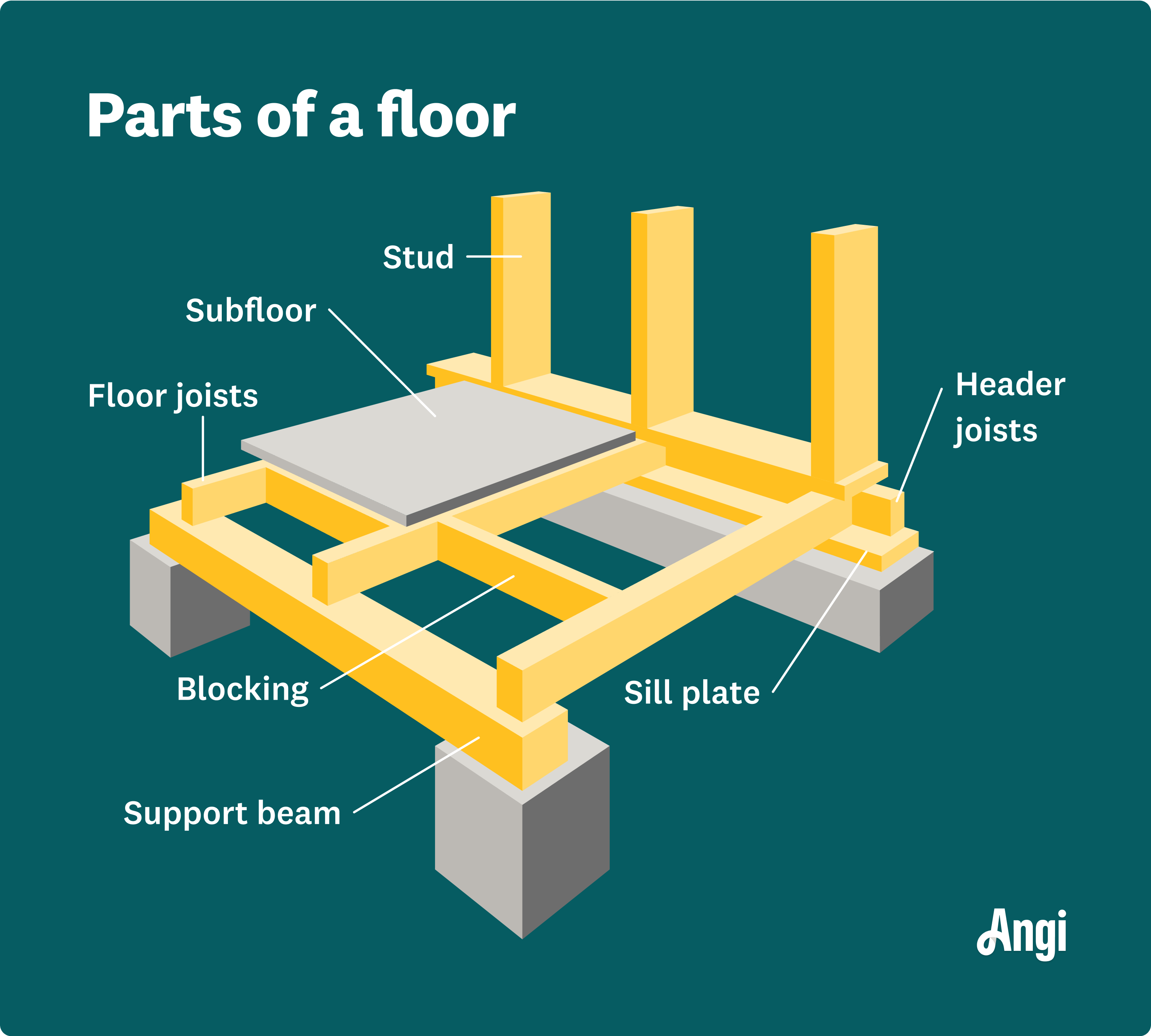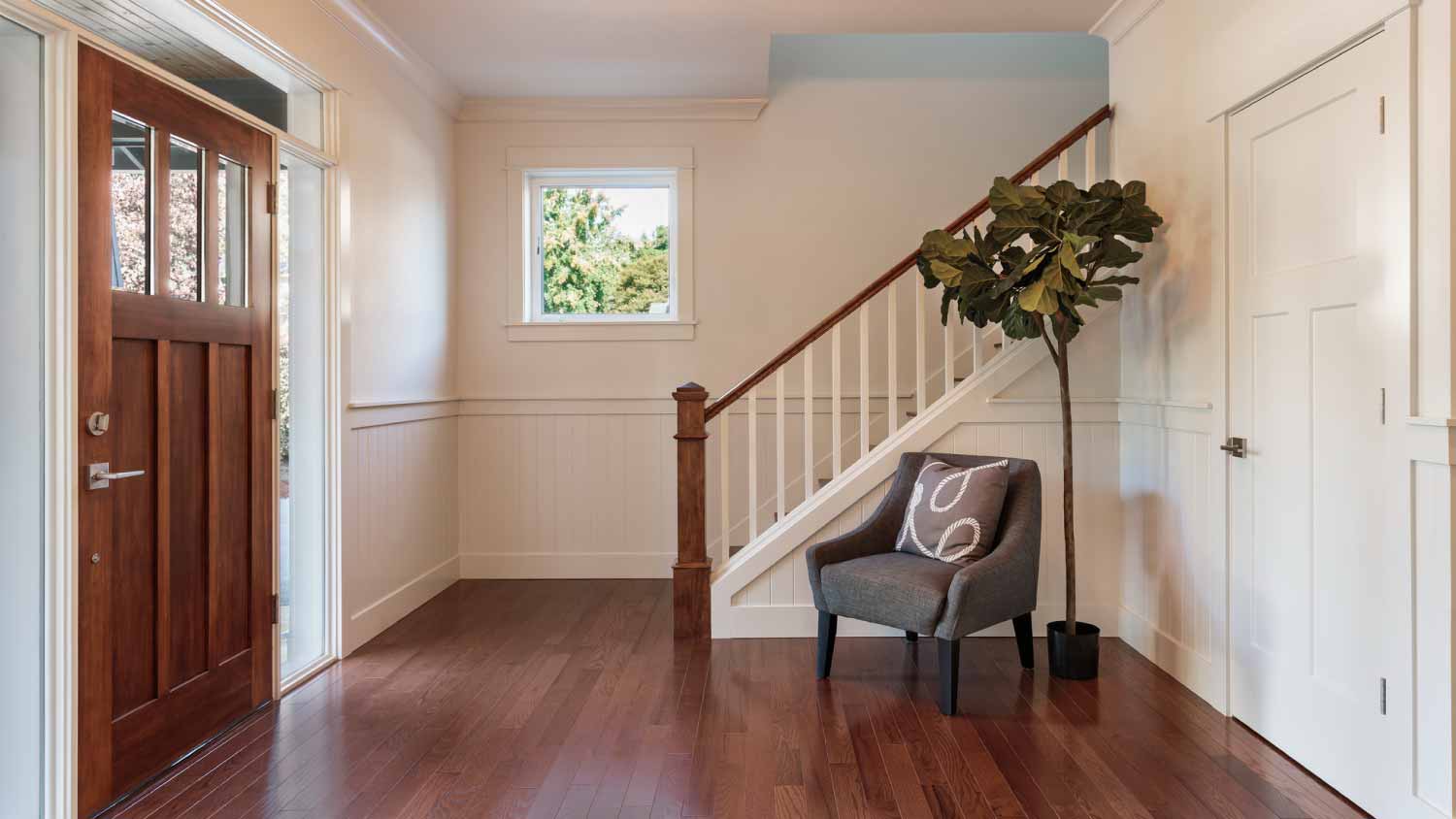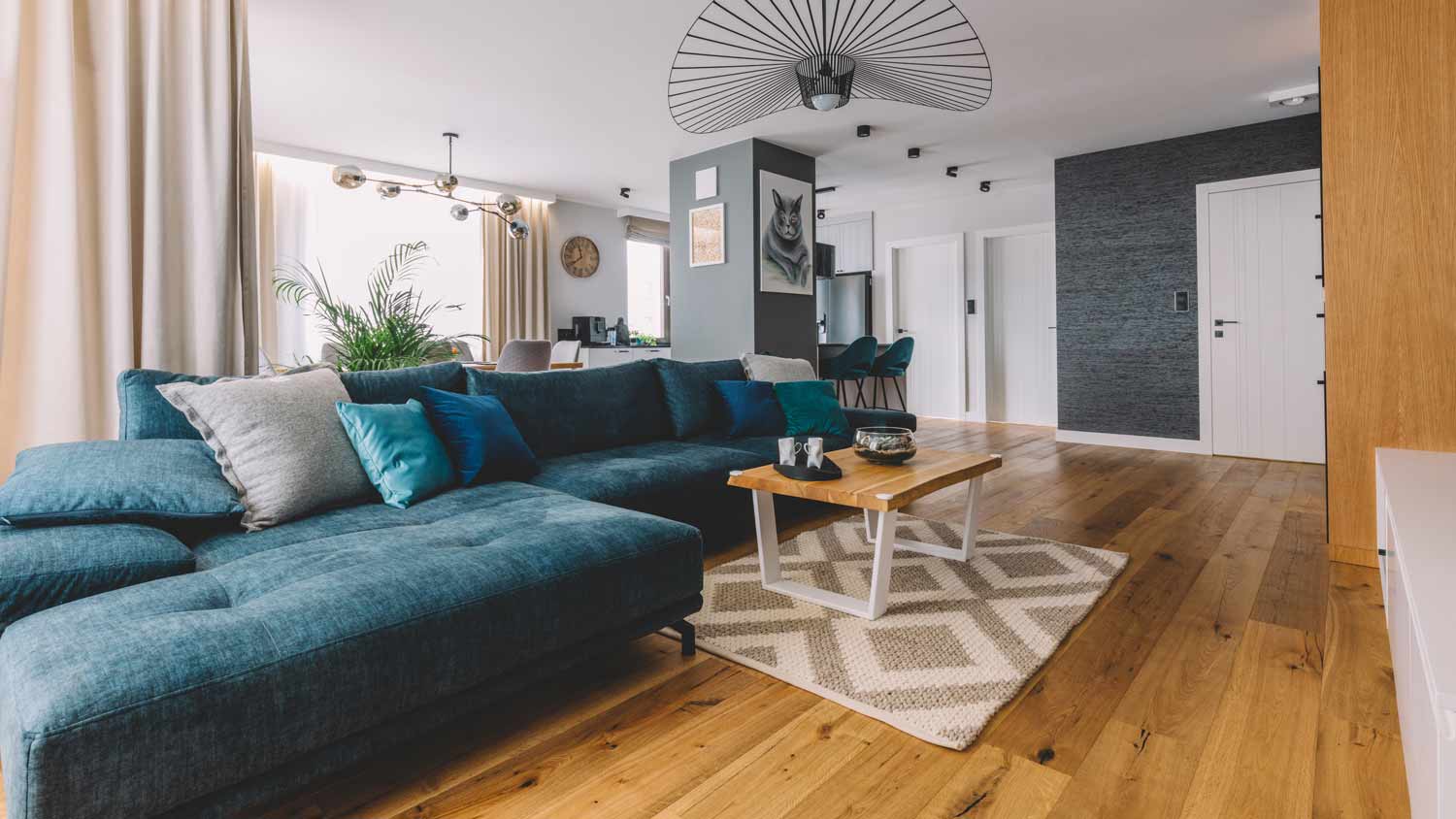How Much Does Sagging Floor Repair Cost? [2025 Data]
The average sagging floor repair cost is $5,500. Most homeowners pay between $1,000 and $8,500. Costs vary greatly depending on the type and extent of the damage.


Sagging floor repair costs an average of $1,000 to $8,500. How much you pay varies widely depending on the cause and degree of the damage. You might pay $300 for a simple subfloor repair or up to $20,000 to replace rotting joists across an entire floor.
Sagging Floor Repair Cost Factors
Sagging floor repair costs are wide-ranging, with multiple factors influencing the final price. These include the type of repair, the extent of the damage, and any additional associated work.
Type of Repair

The biggest factor influencing sagging floor repair costs is the underlying cause of the dipping and the type of repair required to fix it. A small subfloor repair caused by minor water damage might only cost $300, but major foundation damage repairs could be as high as $20,000. Sources of sagging floors include wood-eating insects, water damage, rotting joists or beams, foundation problems, and age-related issues.
| Repair Type | Average Cost |
|---|---|
| Subfloor damage | $100–$700 |
| Water damage | $1,350–$6,275 |
| Joist or post damage | $4000–$12,000 |
| Termite damage | $1,000–$10,000 |
| Foundation damage | $2,200–$8,000 |
Subfloor Damage
If it’s just your subfloor that’s a problem, breathe a sigh of relief. Subfloor repairs cost an average of $300 to $700, depending on the material and the extent of the damage. This layer of economical plywood is the easiest and least expensive cause of sagging floors to repair. If you can do a DIY patch-up job, you could pay less than $100 to fix it. The average subfloor replacement costs run from $900 to $3,000.
Water Damage

The average water damage repair costs are $1,350 to $6,275. However, sagging floor repair costs caused by water damage vary greatly depending on the source of the water, the amount of damage, and how long it has been left unaddressed. It costs less if your subfloor warps and sags in an isolated spot. If your entire floor is affected by storm damage and the floor joists or beams are rotting, you could spend over $10,000 making things right.
Floor Joists or Support Beams
The cost of repairing floor joists averages $4,000 to $12,000. Your final bill depends on the cause of the damage and how many joists or support beams require replacing. These crucial structural elements of your flooring can suffer damage from water, dry rot, or insects. Replacing a single damaged joist might only set you back $300, but replacing decaying old joists across a whole floor to make your home structurally sound could cost more than $20,000.
Termite Damage
Wood-eating insects can wreak havoc on the structural joists and beams of your flooring, and the average termite damage repair costs are between $1,000 and $10,000. If you spot the signs of termite damage quickly, you might only have to replace a beam or two. Prepare to repair or replace large sections of floors when a large infestation has gone undetected for a while.
Foundation Damage

If your sagging floor is the result of your aging home shifting, sinking, or cracking at the foundation, the average cost of foundation repairs is between $2,200 and $8,000. Adding additional support beams is sometimes sufficient, but repairs can cost over $20,000 if your foundation needs lifting.
Size
Repair costs depend on how much of the floor needs replacing when it’s sagging. They could range from $5 per square foot for a basic subfloor patch to $50 per square foot for high-quality joist replacements.
| Room Floor Size (Sq Ft.) | Repair Cost |
|---|---|
| 50 | $250–$2,500 |
| 100 | $500–$5,000 |
| 200 | $1,000–$10,000 |
| 300 | $1,500–$15,000 |
Structural Engineer
Unless you're sure your sagging floor is related to a simple subfloor fix, it's sensible to hire a structural engineer to inspect the framework. The average cost to hire a structural engineer is $345 to $775.
This step is especially important if you're considering doing a DIY repair. A local structural engineer can assess how severe the damage is and what the best course of action is to make your floor safe and structurally sound again.
Additional Repairs or Services
After ripping up the flooring to find and repair the cause of the sagging floor, other repair work can be necessary. Here are some of the extra services you might have to budget for.
Floor Covering Repairs or Replacement
Sometimes, you can carefully lift your carpet or hardwood flooring during any sagging floor repair work. Other times, it might be beyond repair because of water damage or extensive work. The average carpet repair costs $130 to $280, and carpet replacement costs $780 to $2,800. Expect to pay $480 to $1,700 in hardwood floor repair costs and $2,400 to $7,000 for hardwood flooring installation costs.
Mold Removal
Mold remediation costs an average of $1,200 to $3,750. When water damage is the cause of your sagging floor, you might need to hire a local mold remediation contractor to prevent lingering spores from spreading and doing further damage.
Termite Extermination
If your floor is sagging due to damaged joists and support beams caused by termites, you’ll want to ensure all the wood-eating insects are gone to prevent further problems. The average cost of termite treatment is $230 to $1,000.
Sagging Floor Repair vs. Replace
If you can salvage an existing floor, this invariably saves you money. The average cost to replace sagging flooring joists is $5,000 to $20,000. When the damage is extensive and relates to joists or foundations, it may be necessary to replace the flooring for structural reasons.
If either sagging floor repair or replacement is an option in an old home and you’re struggling to decide which to opt for, consider replacement when the sagging floor repair costs are more than 50% of replacing the flooring. This is a better long-term investment.
DIY Sagging Floor Repair vs. Hiring a Pro
Learning how to repair a sagging floor is within a handy homeowner's reach when it’s a straightforward subfloor fix. However, the cause of sagging floors is often more complex. If there is any doubt about the extent of the damage, it’s best to arrange a professional inspection to ensure there isn’t any bigger underlying issue.
When repairs involve joists, foundation, or other structural elements, hiring a professional flooring repair company near you or a local contractor is best—and sometimes necessary. Trying to tackle repairs without the proper know-how can lead to more serious structural damage that can make your house unsafe and result in more costly repair bills.
Tips to Reduce Cost While Repairing a Sagging Floor
Sagging floor repair costs can be substantial. When the complexity of the repair doesn’t lend itself to DIYing to make savings, consider these other money-saving tips.
Don’t delay making repairs: The worse the sagging gets, the greater the risk of more costly and unsafe structural issues.
Arrange an inspection: A structural engineer can identify the root cause of the sagging and assess the extent of the damage so you don’t make unnecessary or unsafe repairs. It also enables you to get a more accurate quote from a contractor.
Get multiple quotes: Don’t go with the first contractor you contact. Shopping around multiple reputable contractors allows you to compare their terms and pricing.
How Angi Gets Its Cost Data
Home is the most important place on earth, which is why Angi has helped more than 150 million homeowners transform their houses into homes they adore. To help homeowners with their next project, Angi provides readers with the most accurate cost data and upholds strict editorial standards. We extensively research project costs to develop the pricing data you see, so you can make the best decisions for you and your home. We rely on reputable sources, including the U.S. Bureau of Labor Statistics, academic journals, market studies, and interviews with industry experts—all to ensure our prices reflect real-world projects.
Want to help us improve our cost data? Send us a recent project quote to costquotes@angi.com. Quotes and personal information will not be shared publicly.
Frequently Asked Questions
Neglecting to repair or replace a sagging floor can expose you to the risk of injury and your home to serious structural damage. When sagging floors are caused by termites, water damage, or weak foundations, holding off on completing the work can lead to a more costly repair bill as the problem can worsen over time.
No subflooring is perfectly level, but you should never ignore any noticeable floor sagging. Most contractors deem a floor that slopes by a 1/2 inch to 1 inch per 20 feet of floor acceptable. Further investigation is required when the slope or sag is more than one and a half inches.

.jpg?impolicy=leadImage)













